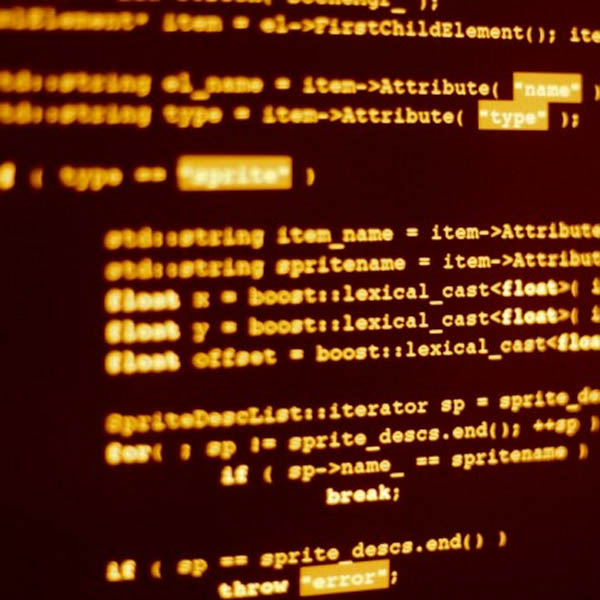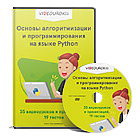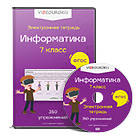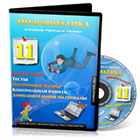INFORMATION AND COMMUNICATION TECHNOLOGY
Information and communications technology or (ICT) is extensional term for information technology (IT) that stresses the role of unified communications and the integration of telecommunications (telephone lines and wireless signals), computers as well as necessary enterprise software, middleware, storage, and audio-visual systems, which enable users to access, store, transmit, and manipulate information.
The term ICT is also used to refer to the convergence of audio-visual and telephone networks with computer networks through a single cabling or link system. There are large economic incentives (huge cost savings due to elimination of the telephone network) to merge the telephone network with the computer network system using a single unified system of cabling, signal distribution and management.
ICT is a broad subject and the concepts are evolving. The term covers any product that will store, retrieve, manipulate, transmit or receive information electronically in a digital form, e.g. personal computers, digital television, email, robots. For clarity, Zuppo provided an ICT hierarchy where all levels of the hierarchy "contain some degree of commonality in that they are related to technologies that facilitate the transfer of information and various types of electronically mediated communications". Theoretical differences between interpersonal-communication technologies and mass-communication technologies have been identified by the philosopher Piyush Mathur. Skills Framework for the Information Age is one of many models for describing and managing competencies for ICT professionals for the 21st century.
ICT has been employed as an educational enhancement in Sub-Saharan Africa since the 1960s. Beginning with television and radio, it extended the reach of education from the classroom to the living room, and to geographical areas that had been beyond the reach of the traditional classroom. As technology evolved and became more widely used, efforts in Sub-Saharan Africa were also expanded. In the 1990s a massive effort to push computer hardware and software into schools was undertaken, with the goal of familiarizing both students and teachers with computers in the classroom. Since then, multiple projects have endeavored to continue the expansion of ICT's reach in the region, including the One Laptop Per Child (OLPC) project, which by 2015 had distributed over 2.4 million laptops to nearly 2 million students and teachers.
The inclusion of ICT in the classroom, often referred to as M-Learning, has expanded the reach of educators and improved their ability to track student progress in Sub-Saharan Africa. In particular, the mobile phone has been most important in this effort. Mobile phone use is widespread, and mobile networks cover a wider area than internet networks in the region. The devices are familiar to student, teach, and parent, and allow increased communication and access to educational materials. In addition to benefits for students, M-learning also offers the opportunity for better teacher training, which lends to a more consistent curriculum across the educational service area. In 2011, UNESCO started a yearly symposium called Mobile Learning Week with the purpose of gathering stakeholders to discuss the M-learning initiative.
Implementation is not without its challenges. While mobile phone and internet use are increasing much more rapidly in Sub-Saharan Africa than in other developing countries, the progress is still slow compared to the rest of the developed world, with smartphone penetration only expected to reach 20% by 2017. Additionally, there are gender, social, and geo-political barriers to educational access, and the severity of these barriers vary greatly by country. Overall, 29.6 million children in Sub-Saharan Africa were not in school in the year 2012, owing not just to the geographical divide, but also to political instability, the importance of social origins, social structure, and gender inequality. Once in school, students also face barriers to quality education, such as teacher competency, training and preparedness, access to educational materials, and lack of information management.
In modern society ICT is ever-present, with over three billion people having access to the Internet. With approximately 8 out of 10 Internet users owning a smartphone, information and data are increasing by leaps and bounds. This rapid growth, especially in developing countries, has led ICT to become a keystone of everyday life, in which life without some facet of technology renders most of clerical, work and routine tasks dysfunctional. The most recent authoritative data, released in 2014, shows "that Internet use continues to grow steadily, at 6.6% globally in 2014 (3.3% in developed countries, 8.7% in the developing world); the number of Internet users in developing countries has doubled in five years (2009-2014), with two thirds of all people online now living in the developing world."
However, hurdles are still large. "Of the 4.3 billion people not yet using the Internet, 90% live in developing countries. In the world's 42 Least Connected Countries (LCCs), which are home to 2.5 billion people, access to ICTs remains largely out of reach, particularly for these countries' large rural populations." ICT has yet to penetrate the remote areas of some countries, with many developing countries dearth of any type of Internet. This also includes the availability of telephone lines, particularly the availability of cellular coverage, and other forms of electronic transmission of data. The latest "Measuring the Information Society Report" cautiously stated that the increase in the aforementioned cellular data coverage is ostensible, as "many users have multiple subscriptions, with global growth figures sometimes translating into little real improvement in the level of connectivity of those at the very bottom of the pyramid; an estimated 450 million people worldwide live in places which are still out of reach of mobile cellular service."
Favorably, the gap between the access to the Internet and mobile coverage has decreased substantially in the last fifteen years, in which "2015 [was] the deadline for achievements of the UN Millennium Development Goals (MDGs), which global leaders agreed upon in the year 2000, and the new data show ICT progress and highlight remaining gaps." ICT continues to take on new form, with nanotechnology set to usher in a new wave of ICT electronics and gadgets. ICT newest editions into the modern electronic world include smart watches, such as the Apple Watch, smart wristbands such as the Nike+ FuelBand, and smart TVs such as Google TV. With desktops soon becoming part of a bygone era, and laptops becoming the preferred method of computing, ICT continues to insinuate and alter itself in the ever-changing globe.
Information communication technologies play a role in facilitating accelerated pluralism in new social movements today. The internet according to Bruce Bimber is "accelerating the process of issue group formation and action" and coined the term accelerated pluralism to explain this new phenomena. ICTs are tools for "enabling social movement leaders and empowering dictators" in effect promoting societal change. ICTs can be used to garner grassroots support for a cause due to the internet allowing for political discourse and direct interventions with state policy[34] as well as change the way complaints from the populace are handled by governments. Furthermore, ICTs in a household are associated with women rejecting justifications for intimate partner violence. According to a study published in 2017, this is likely because “[a]ccess to ICTs exposes women to different ways of life and different notions about women’s role in society and the household, especially in culturally conservative regions where traditional gender expectations contrast observed alternatives.

 Получите свидетельство
Получите свидетельство Вход
Вход












 Information and communication technology (16.33 KB)
Information and communication technology (16.33 KB)
 0
0 328
328 2
2 Нравится
0
Нравится
0










